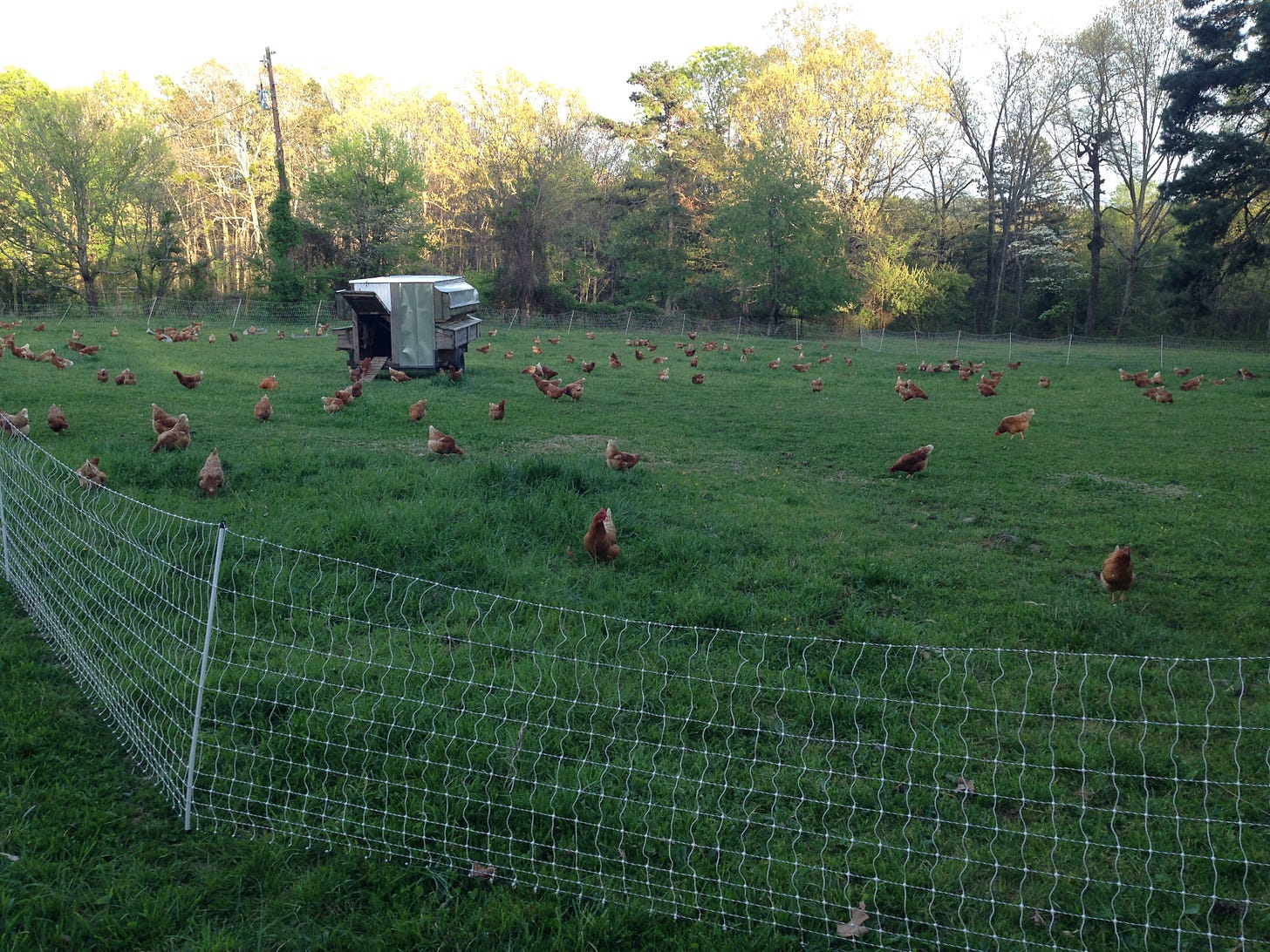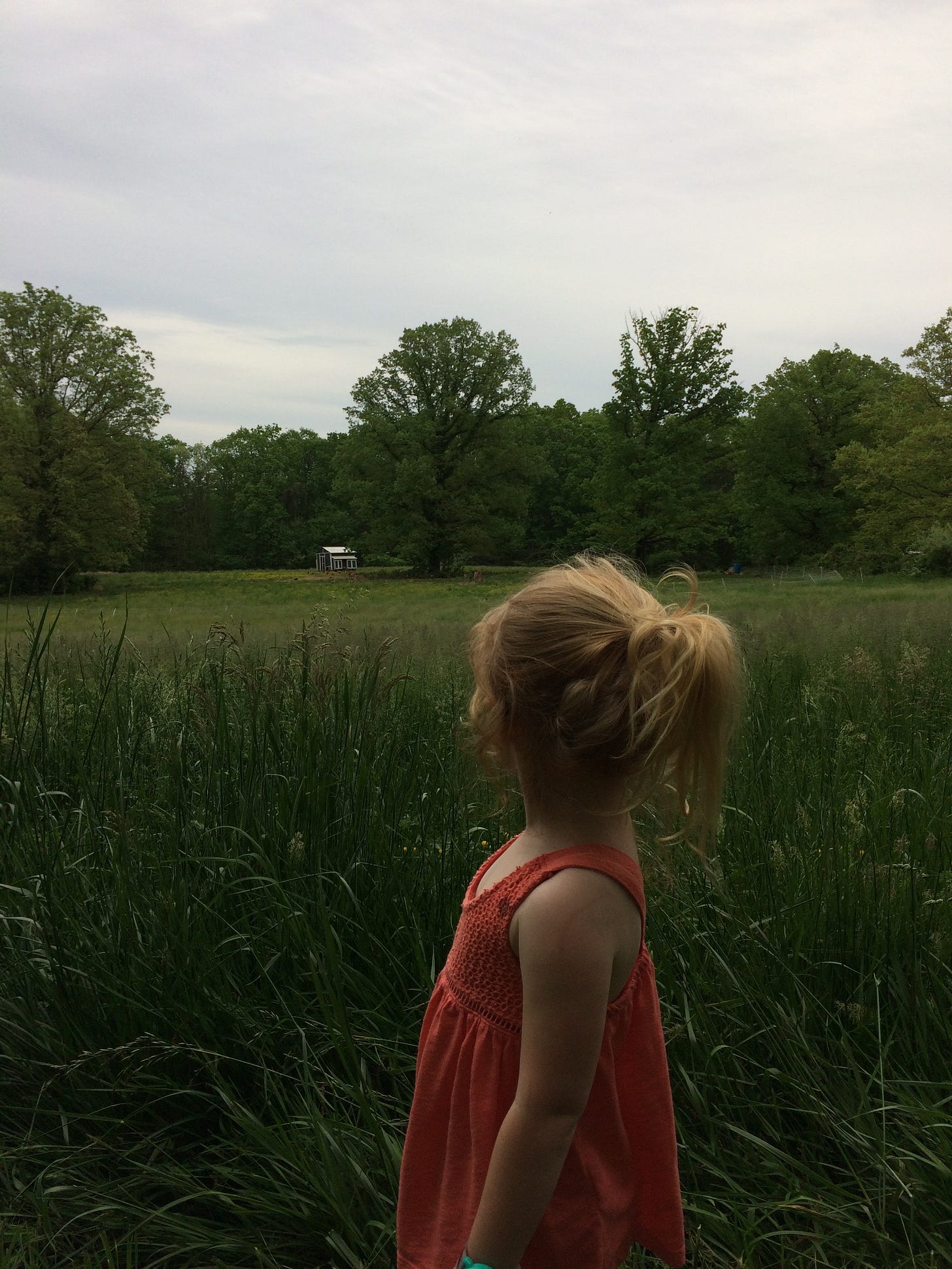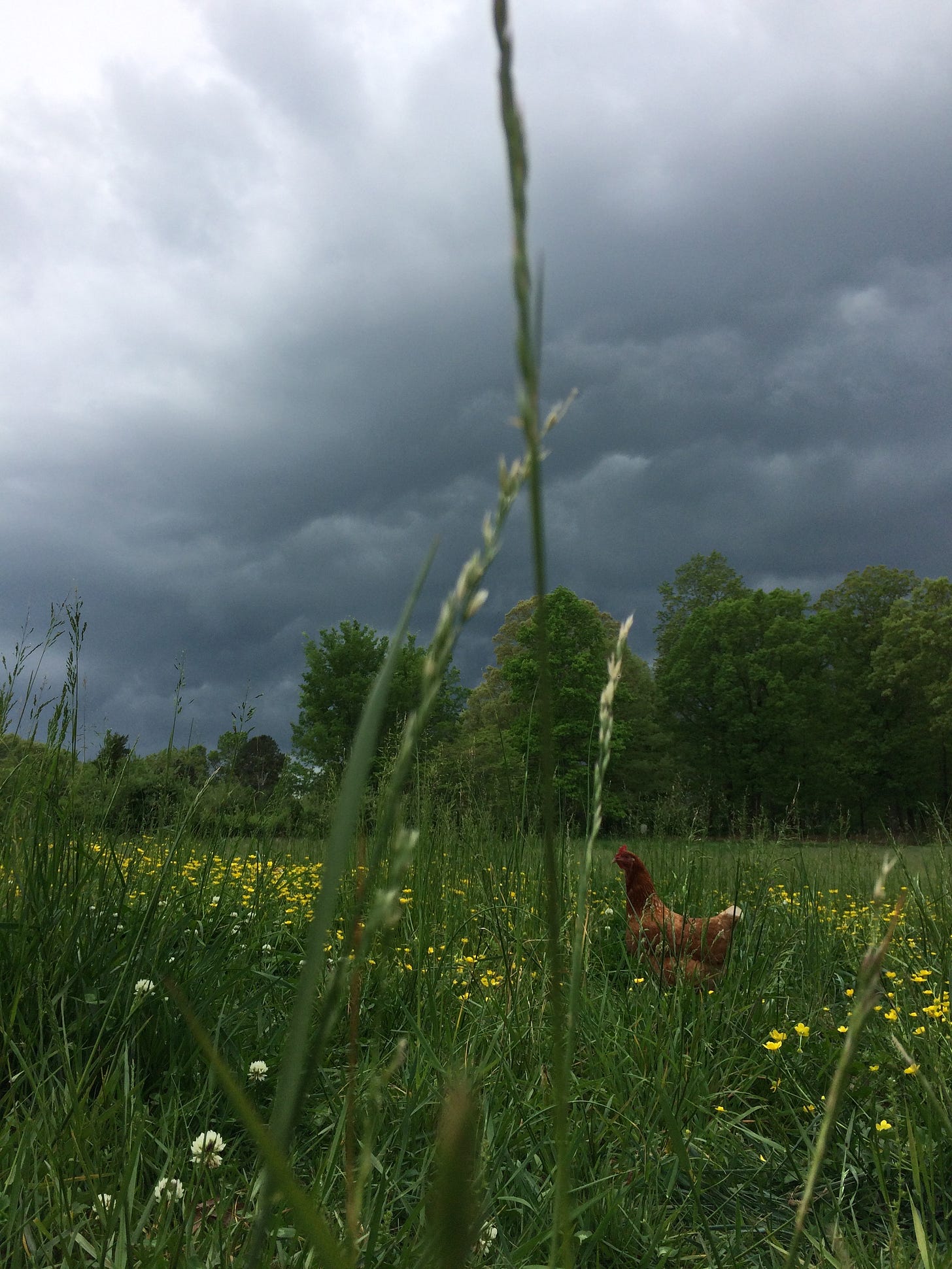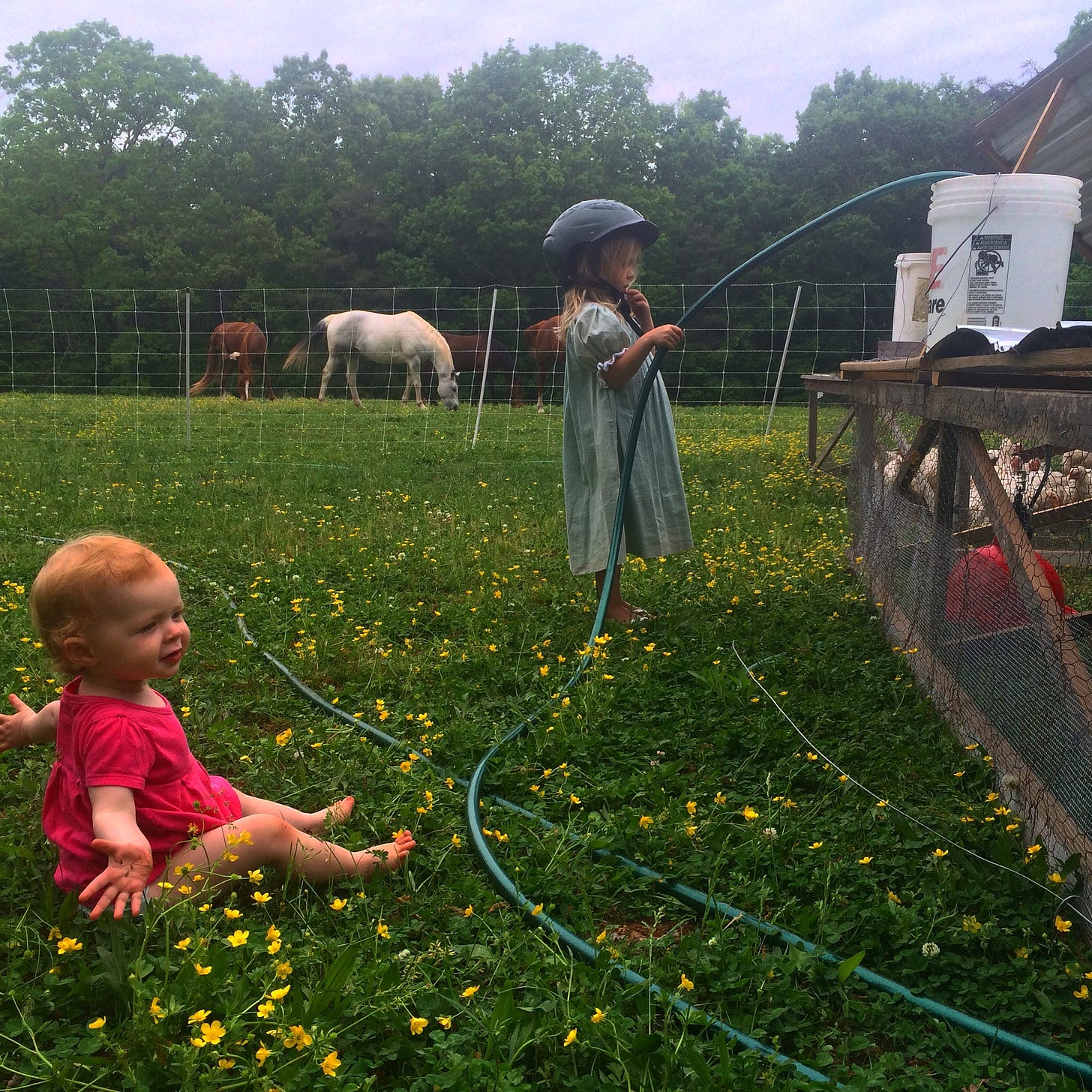
What do you and I, rest—and a field—have in common?! Stay with me on this one. It’s actually pretty dang compelling.
My husband, Marshall, and I decided at the ages of 27 and 28 respectively to move back to our hometown of Lookout Mountain, GA to become sustainable farmers and start a business. That was 12 years ago. A lot has transpired since then. We are no longer full-time farmers (the plot of our story had some unexpected turns), but we still hold deeply and dearly the understanding of the patterns that exist in the world when you pay close attention to the design of land and animals.
In fact, that design and the impressive results from following it, was one of the most compelling draws to regenerative farming for us in the first place. For someone who knew absolutely nothing about any of it, I quickly nerded out on the science of soil and grass and all the things (did you know different types of grass have different flavors?! And different animals favor different species of grass and will selectively eat them over others?!)
But to stay on track, let’s focus on three simple, but important, facts about fields:
If a field is left to its own devices and is not tended at all, thorns and thistles will steadily grow and begin to take over. Then the surrounding woodlands will slowly encroach upon its edges until, eventually, the land is no longer a field but woodlands again.
I am watching this process currently happen to a small field behind our house (that we do not own). In just two years without large animals eating its grasses nor regular mowing occurring, it’s grown difficult to walk through with wayward branches catching my clothing or tearing my skin with their thorns. And already, the forrest surrounding it is making its piney advance to take over.
If a field is overused it will eventually be diminished.
If animals stay too long on a section of grass or if the number of animals exceeds the field’s capacity, it begins to hurt instead of build up the land. Patches of grass will go missing or not grow back. Soil health will be depleted. Can you feel what I feel? I know that depleted, tired feeling the image of a dusty, patchy field conjures—like I’m about to get sick and just recognizing the symptoms.
The third and final fact to know about a field is the most beautiful:
A field that is used and worked within its limits—and is also given time to rest—is a field that flourishes.
Yes, even the land needs to rest.
I would imagine anyone can guess where this metaphor is going. And having witnessed the truth of these statements in the design of the land and the symbiotic rhythms required for its health and goodness, it’s a metaphor that deeply resonates within me.
Imagine for a moment that you are a field. Of the three types of fields described today, which one do you feel most like?
1. Overtaken and lost?
2. Depleted and Drained?
3. Rested and Flourishing?
I have been each of these three types of fields at various times. Life is so seasonal and as much as I’d like to write that anyone can circumvent being a depleted or overtaken field—at times it simply can’t be avoided.
No matter which field you relate to right now, I believe they each have something to teach us. And I believe—deeply believe—that there is rest to be found even when we’re drained, depleted or desperately tired. You are not alone in these places, and experience tells me there’s hope—and we all need that reminder sometimes.
In sustainable farming, rotational grazing is the “design” I referred to earlier that was so compelling as a young farmer—it’s the rhythm farmers follow to care for the animals, to increase the land’s fertility and productivity, and ultimately for their success in production of healthy food of which you and I reap the benefits. It’s a nourishing process for all.
In case you’re curious about the process of rational grazing—like me, the self-proclaimed grass nerd— here’s the basic concept put into simple practice:
Animals enjoy eating just the right amount of their favorite grasses from a specific pasture while leaving behind nutrient-dense fertilizer in the form of manure. Then before the animals can take too much of the land’s resources or negatively impact the soil, the animals are moved to a new section of grass. The animals are happy with a fresh, delectable salad plate within the new pasture, and the land where the animals had just been is given time to rest.
I’ll say it again: The land is given time to rest.
During this resting state the nitrogen from the manure has opportunity to assimilate into the soil, nourishing the ever-growing, dense and frothy brown dirt while bolstering new, greener and healthy growth in the grass (among many other very cool facts I can tell you about later ;-). After the needs of the field have been attended to through this resting period, it’s ready once again to give to and nourish the next rotation of animals.

How beautiful is that?! (Both figuratively and literally.)
I go into such explanation because I think this flourishing field illustration expresses part of the point and the beauty of rest juxtaposed to the depleted and overgrown fields.
First of all, it recognizes that a field has needs. At first glance, a field appears to be an inanimate piece of landscape, but in reality its teaming with life and microorganisms that require attention to their specific make up and needs. On a basic, organic level, the attention—or lack thereof—determines the type of field that develops.
Secondly, it illustrates beautifully exactly what is true for us as living organisms (and even more as beings with physical, emotional and spiritual dimensions as well):
Rest forces us to depend on someone else for a time (or in the case of the field—to depend on another section of pasture to carry the burden for a bit). But perhaps most importantly, rest creates space for our needs to matter and space to unload all we’re carrying.
Overtime, as we root deeper in its practices, it allows us to flourish because we are attending our needs—our innate design—and increasingly residing in healthy soil.
The weeds, thorns, overuse and inattention will threaten our flourishing at times—that’s the reality of life—we will still face hard seasons that will drain us. We will feel patchy or overgrown at times.
But as we learn how to “rotationally graze” our own field—what I will call cultivating our own in “Rituals of Rest”—there’s a new beauty that unfolds and begins to restore and rebuild what feels dusty and depleted in the midst of our busy days.
It gives us a place to return to over and over to pause, to recognize our needs, to realign to what truly matters, to let go—if only for a moment—and to recover our strength. Most days this will look like mini, seemingly insignificant, moments of rest that help to sustain us more than we know.
It will probably mean you will have to ask for help at times. Rest also requires trust, so there’s that to consider. But it also means the burden of your heart and days can be shared and thus made lighter—it’s like a good friend welcoming you with a listening, attentive, nurturing ear.
There is an anchor to hope and wonder and beauty that rest provides.
As we return, root and reside in whatever we carefully cultivate as our “Rituals of Rest”—in turn (and in time)—I have no doubt we will launch with love right back into life. Whether it’s a good or a hard season we will once again be ready to offer the goodness we’ve come to know through rest by offering its fruits to others—just like a flourishing field.






Katherine- so loving all of this! Do you know the song “Let the Ground Rest”??? I think you’d love it 😘